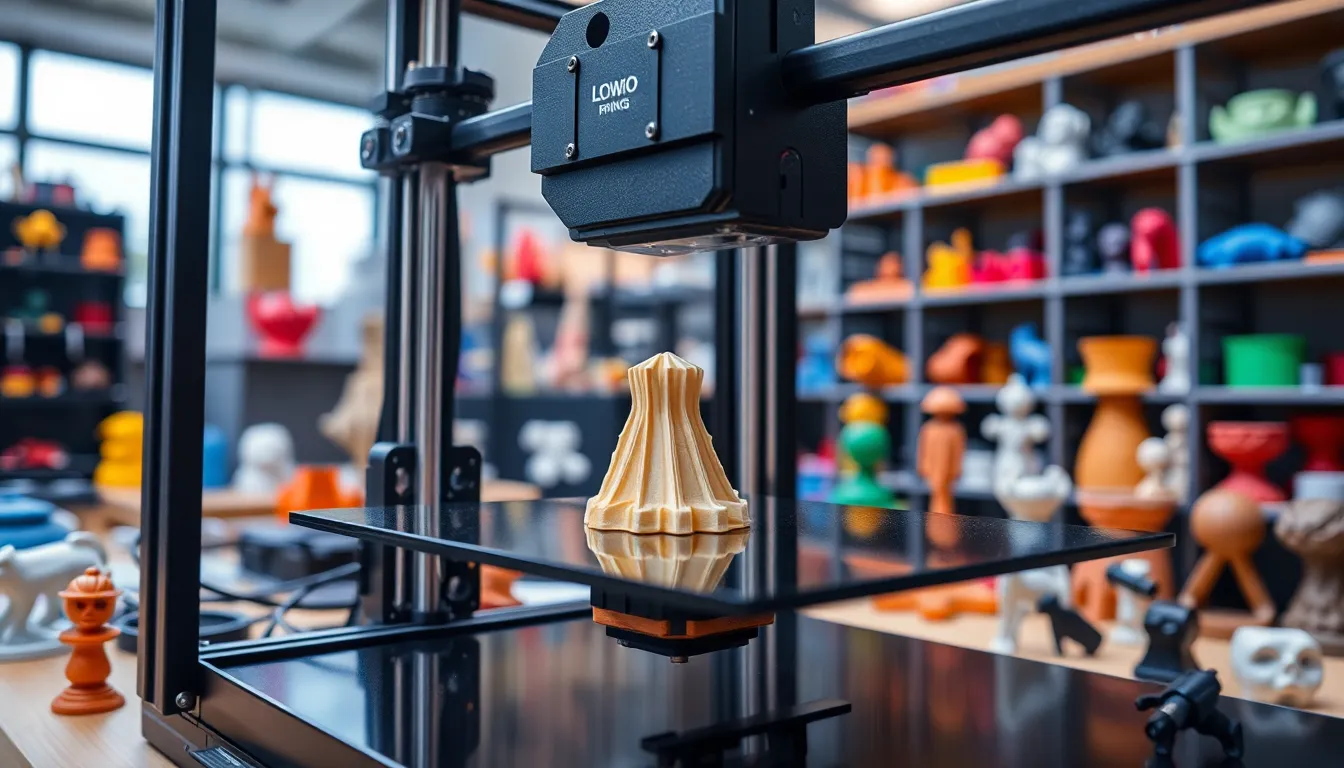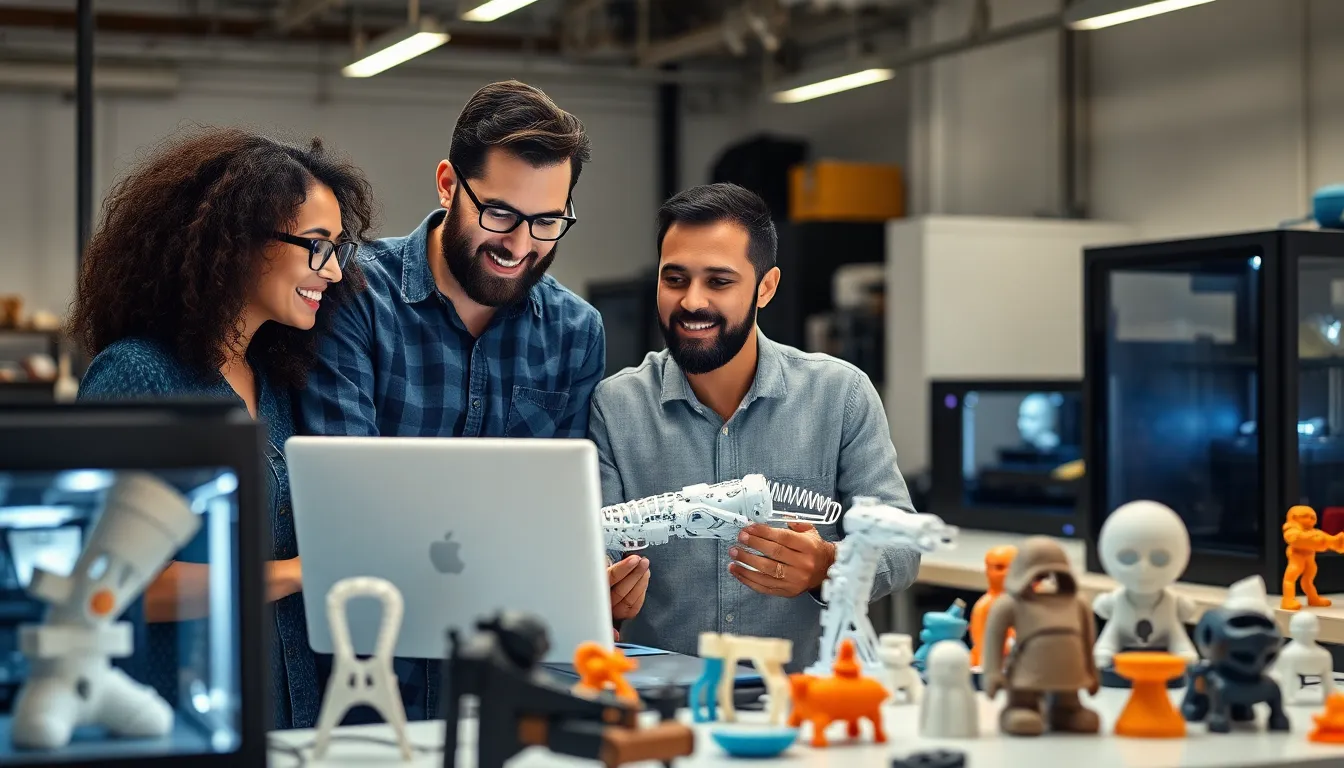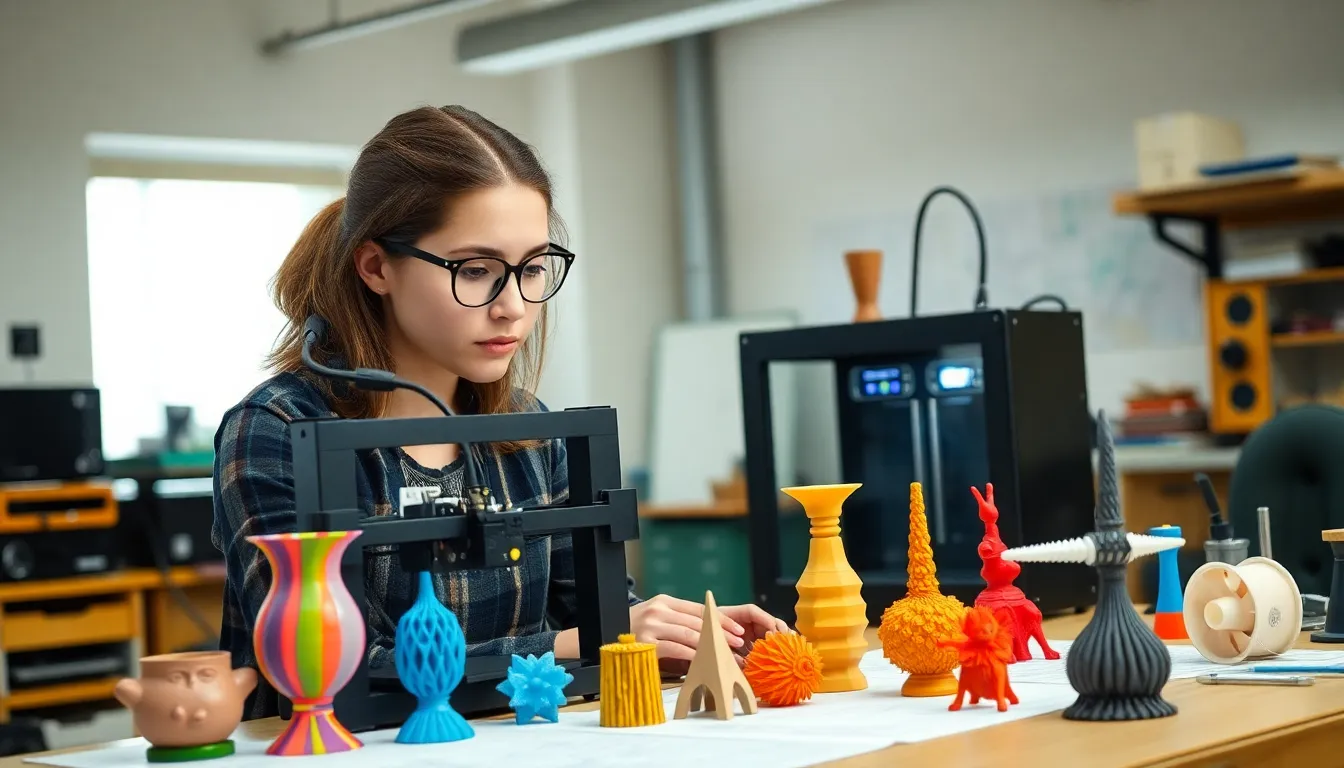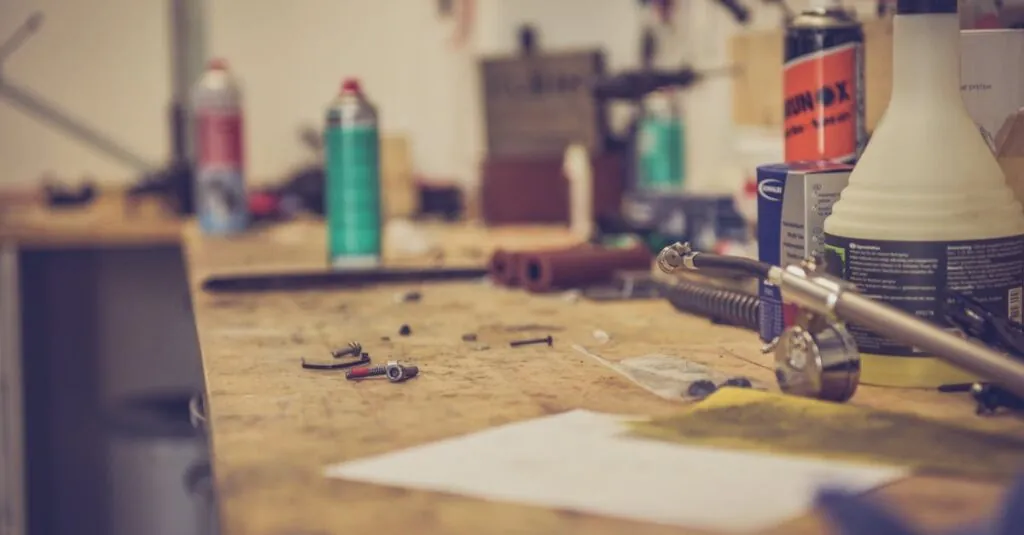In today’s fast-paced world, 3D printing businesses are revolutionizing how products are designed and manufactured. From prototypes to final products, this technology is reshaping industries like healthcare, automotive, and consumer goods. Entrepreneurs are seizing the opportunity to tap into this innovative market, creating solutions that were once thought impossible.
As the demand for customization and efficiency grows, 3D printing offers a unique advantage. Businesses can produce complex shapes and structures that traditional manufacturing methods can’t achieve. This flexibility not only reduces waste but also accelerates the production process, making it a game-changer for startups and established companies alike. With the right strategies, anyone can leverage 3D printing to carve out a niche in this dynamic landscape.
Overview Of 3D Printing Businesses
3D printing businesses leverage additive manufacturing to create products across various sectors. These companies typically focus on specific markets, such as healthcare, automotive, aerospace, and consumer goods. Entrepreneurs utilize advanced technology to produce custom designs efficiently.
Businesses in the healthcare sector often specialize in creating prosthetics, implants, and surgical models. By using 3D printing, they can customize solutions for individual patients. This personalization enhances patient care and streamlines production.
In the automotive industry, 3D printing supports rapid prototyping and the manufacture of complex components. Companies can test designs quickly, reducing overall development time and costs. The ability to create lightweight parts also contributes to improved fuel efficiency.
Consumer goods businesses utilize 3D printing for home decor, fashion, and personalized products. This technology allows for unique designs that cater to individual preferences. As a result, these companies can offer a competitive advantage by providing customized items that traditional manufacturing cannot match.
Overall, 3D printing businesses can benefit from lower production costs and reduced waste. Efficient manufacturing processes make it possible to quickly adapt to market changes. This adaptability is crucial in a rapidly evolving landscape, where consumer demands shift frequently.
The global 3D printing market continues to expand, with projections estimating it will reach $62.79 billion by 2028. As more industries recognize the advantages of 3D printing, the number of businesses entering this space is likely to increase.
Types Of 3D Printing Technologies

3D printing technologies enable businesses to produce a wide range of products efficiently. Various methods exist, each with unique characteristics and applications.
Fused Deposition Modeling (FDM)
Fused Deposition Modeling (FDM) represents the most widely used 3D printing technology. FDM employs a thermoplastic filament, which a heated nozzle extrudes layer by layer to create 3D objects. It’s suitable for prototyping and production, with materials like PLA, ABS, and PETG. FDM’s accessibility and cost-effectiveness attract both hobbyists and industries alike, making it ideal for creating functional prototypes and various consumer goods.
Stereolithography (SLA)
Stereolithography (SLA) utilizes a liquid resin cured by ultraviolet (UV) light to form solid objects. SLA provides high-resolution prints with intricate details and smooth surfaces, setting it apart from other technologies. It excels in industries requiring precision, such as dental and jewelry applications. However, SLA’s post-print processing demands careful handling, as finished products require washing and curing.
Selective Laser Sintering (SLS)
Selective Laser Sintering (SLS) employs a laser to fuse powdered materials, typically nylon or metal, into solid structures. SLS allows for complex geometries and internal features, making it ideal for functional parts and prototypes. Unlike other methods, SLS doesn’t necessitate supports, simplifying the printing process. Its use in aerospace and automotive industries highlights its importance for creating lightweight, durable components.
Benefits Of 3D Printing In Business
3D printing offers numerous advantages for businesses, enhancing production capabilities, reducing costs, and increasing flexibility. Key benefits include cost efficiency, customization, and rapid prototyping.
Cost Efficiency
3D printing minimizes production costs by reducing material waste and lowering labor expenses. It enables companies to print parts on-demand, reducing inventory and storage needs. Businesses can produce small batches economically, thus avoiding large-scale manufacturing costs. According to a study, companies using 3D printing can save up to 75% on materials compared to traditional manufacturing methods.
Customization
3D printing supports the creation of highly customized products tailored to individual customer preferences. Businesses can easily modify designs to meet evolving market demands, ensuring relevance and customer satisfaction. This technology empowers companies to create unique prototypes and limited-edition products, enhancing brand differentiation. Customization leads to higher sales volumes, driving profitability in competitive segments.
Rapid Prototyping
3D printing accelerates the prototyping process, allowing businesses to test ideas quickly and efficiently. Companies can create functional prototypes in hours rather than weeks, significantly shortening the time-to-market. This speed enables businesses to gather feedback faster, allowing for iterative improvements in product design. A reduction of up to 90% in prototyping time can dramatically enhance a company’s competitive positioning.
Challenges Faced By 3D Printing Businesses
3D printing businesses encounter various challenges that can impact their operations and growth potential. Understanding these hurdles is essential for strategy development.
Material Limitations
Material limitations pose significant challenges for 3D printing businesses. Not all materials are compatible with all printer technologies, which restricts design options. Common materials like PLA and ABS are widely used, yet their mechanical properties vary, affecting the strength and durability of finished products. Specialized materials, such as metals and composites, require advanced equipment and expertise, adding to production costs. Businesses must carefully select materials that meet performance standards for specific applications, complicating the development process.
Regulatory Issues
Regulatory issues create obstacles for 3D printing businesses. Different industries face varied compliance requirements, particularly in sectors like healthcare and aerospace. Companies must navigate intellectual property laws, safety standards, and environmental regulations to ensure their products meet legal guidelines. Additionally, the rapid evolution of technology often outpaces existing regulations, leading to uncertainty in compliance. Adapting to these evolving legal frameworks demands time and resources, which can strain smaller businesses.
Market Competition
Market competition remains fierce within the 3D printing landscape. Numerous startups and established companies vie for market share, leading to price wars and reducing profit margins. Staying ahead in innovation requires continuous investment in research and development. The need for differentiation drives businesses to enhance their offerings, yet rapid technological advancements can render products obsolete quickly. Companies must balance competitive pricing with quality and service to maintain customer loyalty and market position.
Future Trends In 3D Printing
The future of 3D printing promises significant innovations and sustainable practices that enhance efficiency and product quality across industries.
Advancements In Technology
Advancements in technology continue to reshape 3D printing. Continuous developments in materials science are introducing new options, such as biocompatible and high-strength polymers, expanding applications in sectors like healthcare and aerospace. Improvements in printing speed and resolution enhance productivity, making 3D printing viable for larger-scale manufacturing. Integration of Artificial Intelligence (AI) and machine learning optimizes design processes, improving accuracy and reducing material waste. These technological trends empower businesses to develop more intricate designs while streamlining production.
Sustainable 3D Printing Practices
Sustainable 3D printing practices address environmental concerns associated with manufacturing. Companies increasingly adopt eco-friendly materials, including recycled plastics and bio-based filaments, which lower the carbon footprint. Energy-efficient printers minimize waste by utilizing only the necessary material for production. Implementing closed-loop systems allows organizations to recycle scrap materials into new products. Emphasizing sustainability not only meets consumer demand for greener products but also positions businesses as responsible industry leaders, enhancing brand reputation and customer loyalty.
The rise of 3D printing businesses marks a pivotal shift in manufacturing and design. By embracing this technology, companies can unlock new levels of customization and efficiency that traditional methods can’t match. As industries continue to evolve, those who adapt to these advancements will likely thrive.
Challenges remain in the form of material limitations and regulatory hurdles, but the potential for innovation is immense. With ongoing technological advancements and a growing emphasis on sustainability, the future of 3D printing looks bright. Businesses that harness these trends will not only enhance their market position but also contribute to a more sustainable and efficient manufacturing landscape.












